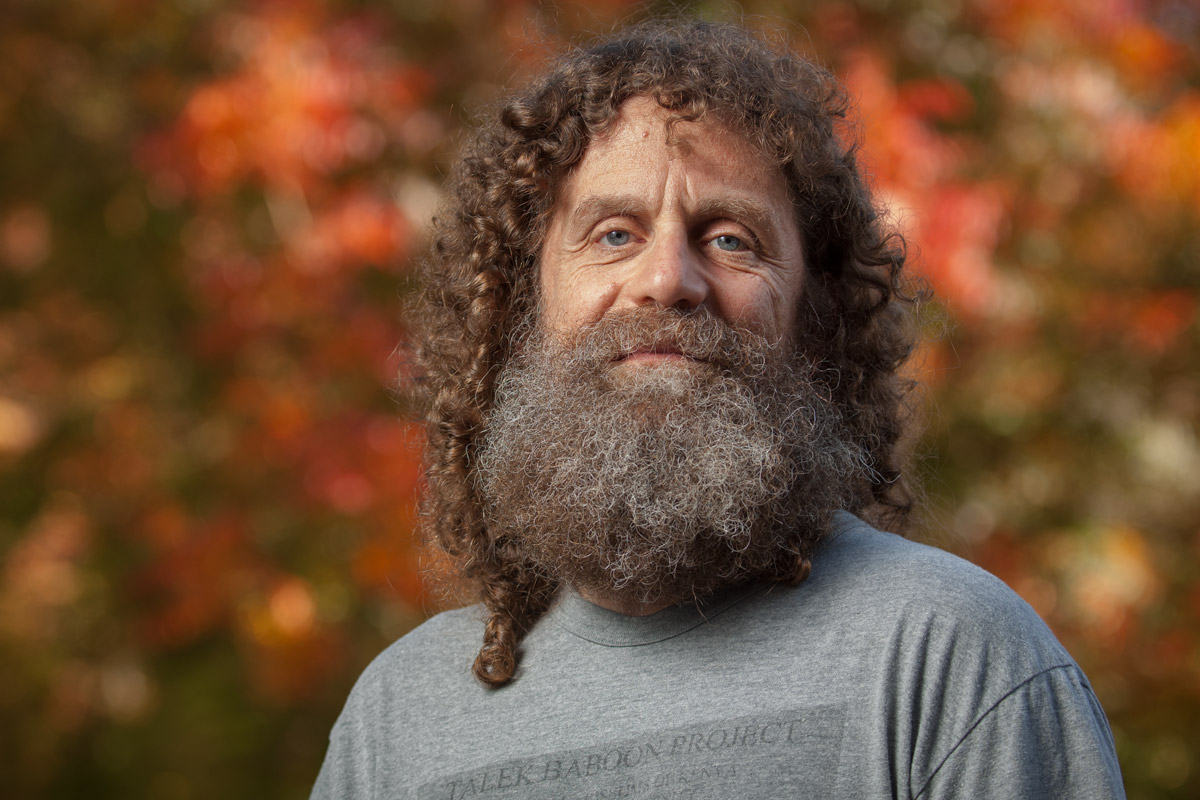We biological machines – Robert Sapolsky: “Behave”

I greatly respect scientists who manage to convey complex subjects in a relatively accessible way. And for that reason, I admire biologist and neurologist Robert M. Sapolsky’s impressive “Behave: The Biology of Humans at Our Best and Worst”.
Sapolsky’s project is astoundingly ambitious: He wants to try to map out why humans behave the way we do. What is it inside our brains that reacts in a particular way to external stimuli – why do people react differently – and why do we even react differently ourselves given different circumstances?
Not unexpectedly, the answer is quite complex. Yes – we have a specific set of inherited genes – and the brain’s neurotransmitters follow very specific rules. And yet: The interaction of factors – our social and cultural background, learned behavior, physical and mental state at that particular moment – is crucial for how the biological system makes us act. “Context, context, context” is Sapolsky’s recurring mantra.
And what answers does the book provide? Is racism, for example, innate? Yes, unfortunately – the fear and aggression center, the amygdala, reacts in a split second at the sight of people who are different from us. The good news is that we also have a frontal cortex that can immediately intervene and modify the primitive reaction of the reptilian brain.
Is there a difference between men and women? Statistically, yes. Men and women tend to react differently to identical situations. Partly, our brain chemistry is simply not the same (estrogen versus androgens) – and we even respond differently to the same neurotransmitters. But then again: A large part of our behavior is culturally conditioned – and modern humans are naturally raised to behave completely differently from cave women and men (at least until we are put under sufficient pressure, when the primitive behaviour comes rushing back …)
And now for the big question: Do we have free will? No, absolutely not! While throughout the rest of the book Sapolsky weighs different neurobiological theories with open-minded fariness, he does not mince words when it comes to free will. In a entertainingly spirited chapter he wages war against the so-called homunculus metaphor. In short: If we were to have free will, it would have to exist beyond everything science knows about the biology of the brain. There would, so to speak, be a little man (a homunculus) sitting in a concrete bunker, completely shielded from the unreliable brain and its biological reactions. And a compromise between the homunculus and neurobiology is dismissed by Sapolsky as even more foolish. But read the chapter yourself – it’s a wonderfully animated provocation. And like everything else in the book, it’s characterized by the author’s charming sense of humor, which along the way makes even the heavy scientific passages a bit more digestible.
Whether one finds Sapolsky’s flirtation with biological determinism saddening is probably a matter of taste (or ideology), but in he final chapter he does his best to end the book on a hopeful note: We may indeed be no more than biological machines – but after all, one of humanity’s impressive traits is our ability to rise above the most primitive behavioral patterns. But before we can do that, we need to understand where they come from. And “Behave” can bring us a giant step closer to that understanding.
Leave a Reply